Trouble Talking
Trouble Talking
The Realities of Communication, Language, and Speech Disorders
Daniel R. Boone
ROWMAN & LITTLEFIELD
Lanham Boulder New York London
Published by Rowman & Littlefield
A wholly owned subsidiary of The Rowman & Littlefield Publishing Group, Inc.
4501 Forbes Boulevard, Suite 200, Lanham, Maryland 20706
www.rowman.com
Unit A, Whitacre Mews, 26-34 Stannary Street, London SE11 4AB
Copyright 2018 by Rowman & Littlefield
All rights reserved . No part of this book may be reproduced in any form or by any electronic or mechanical means, including information storage and retrieval systems, without written permission from the publisher, except by a reviewer who may quote passages in a review.
British Library Cataloguing in Publication Information Available
Library of Congress Cataloging-in-Publication Data
Names: Boone, Daniel R., author.
Title: Trouble talking : the realities of communication, language, and speech disorders / Daniel R. Boone.
Description: Lanham : Rowman & Littlefield, [2018] | Includes bibliographical references and index.
Identifiers: LCCN 2017052854 (print) | LCCN 2017054415 (ebook) | ISBN 9781538110386 (Electronic) | ISBN 9781538110379 (cloth : alk. paper)
Subjects: | MESH: Speech Disorderstherapy | Language Disorderstherapy | Speech Therapy | Language Therapy | Case Reports
Classification: LCC RC427 (ebook) | LCC RC427 (print) | NLM WL 340.3 | DDC 616.85/506dc23
LC record available at https://lccn.loc.gov/2017052854
 The paper used in this publication meets the minimum requirements of American National Standard for Information SciencesPermanence of Paper for Printed Library Materials, ANSI/NISO Z39.48-1992.
The paper used in this publication meets the minimum requirements of American National Standard for Information SciencesPermanence of Paper for Printed Library Materials, ANSI/NISO Z39.48-1992.
Printed in the United States of America

Introduction
In Trouble Talking: The Realities of Communication, Language, and Speech Disorders , I take a fascinating look at many speech pathologies, the people who have them, and their effects on their families and the people around them. Each of the brief stories told here, anecdotal tales, were true clinical or situational events observed directly by me. All names and locations have been changed to protect patient identification.
The ability to speak is one of the most important abilities that separate the human from the animal world. The power of language (both spoken and written) is unique to humanity for punctuating memory, for managing present needs, and for planning future events. In spoken language, the dialogue is between a speaker and a listener who both speak the same language. Likewise, in written language, effective communication requires that both writer and reader use the same language code. However, in communication disorders, the speakers compromised verbal message has great impact on the appropriateness of the listeners response. As the patient struggles to speak, the listener often does not know how to react. Also, for many head-injury patients who experience a sudden loss of their previous abilities to write and to read, there is a serious compromise in effective communication.
Here you will find a variety of brief encounters between speaker and listener. Some of the particular situations were experienced by the patient while he or she was in speech therapy. Other tales are direct observations of difficulties a person with a communication disorder experienced while reacting in the real world. Some of the tales were told by patients or their families looking back at how their communication struggles affected everything they hoped to do. Similar to stories told by Sacks of experiences of neuropsychiatric patients, this collection of stories brings together dozens of faulty speech episodes that are simultaneously humorous, heartfelt, disturbing, and insightful. For the reader unfamiliar with communication disorders, we will take a brief look at the disorder followed by a glimpse of the person who had difficulty talking in a particular situation. When speakers speak differently from their listeners, some listeners react inappropriately.
The difference in talking, such as someone speaking with a stutter, can shape the response of the listener to, for example, look the other way or say the problematic word. Or the unexpected repetition of a person with aphasia who keeps repeating the same phrase (like a woman in one of my stories who could only say damn shoes) may force the listener to untangle the utterance for some literal meaning. Or the faulty speech of a man with Parkinsons disease may force his listeners to guess at what he is trying to say. Or patients with dementia, who may look like everyone else their age, may give an unrelated or bizarre response to a strangers question. Or the woman who has lost her voice cannot make her feelings known on the phone to her son who is somewhere away from home. Almost all of these patient-types are often seen by medically oriented and university-based speech-language pathologists.
Although I have been a speech-language pathologist (SLP) for many decades, I am now but one of a growing number of SLPs practicing in our discipline. In 2017, there were over 191,000 audiologists and speech-language pathologist members of the American Speech-Language-Hearing Association (ASHA). The clinically certified clinicians in ASHA are about equally divided into two work settings: (1) preschool and school programs; or (2) medical/university clinical programs. There are more than 30 million Americans with speech-language-voice disorders related to various causes: hearing loss, developmental delay, neurological disorders, brain injury, intellectual disabilities, drug abuse, physical impairments such as cleft lip or palate, or vocal abuse or misuse. Most of these various causes of communication disorders are treatable by speech-language pathologists (SLPs) and specialists from other professional disciplines. After identifying causation and planning treatment of the disorder, the usual goal of speech therapy is to improve the communication between speaker and listener.
Again for the reader, the focus of many of the stories is the impact of the patients talking problem on his or her listeners, who usually expect the speaker to understand and speak the same way they do. When speakers speak differently, they sometimes are negatively shaping the listeners response. And, of course, negative listener response may often negatively shape the future behavior of the patient.
Unique to the stories in Trouble Talking is the range of ages of children and adults who collectively represent a diversity of communication disorders. This diversity of patient type in the stories is directly related to my working as a medically oriented speech-language pathologist in a series of different clinical settings (including private practice). My first clinical experience in speech pathology was helping young men with aphasia, who had experienced devastating head wounds during the Korean War, learn to talk again. Then, in graduate school and beyond, I was fortunate to work for seven years in a chronic-disease hospital in Cleveland, where I treated people with stroke-induced aphasia and other patients with degenerative diseases (like multiple sclerosis or Parkinsons disease), who struggled with their motor-speech disorders. Later I saw patients in a childrens rehabilitation center, university speech and hearing clinics, and a university hospital communication disorders clinic.
These diverse tales are organized into five different kinds of communication disorders, each with its own chapter: chapter 1, Tales of Aphasia; chapter 2, Tales of Dementia; chapter 3, Tales of Neurogenic Disorders; chapter 4, Tales of Voice Disorders; chapter 5, Tales of Speech Pathology. After the presentation of the stories in each particular chapter, we consider questions that the stories have generated. In the final chapter, chapter 6, Management of Communication Disorders, we offer some useful summary discussion of both short-term and long-term strategies for improving patient communication.
Next page
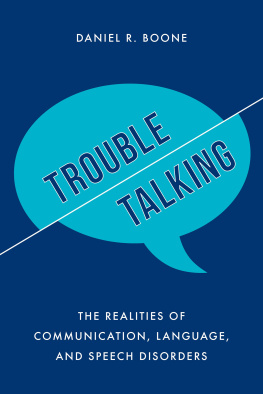
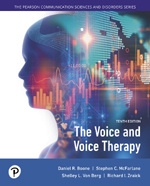


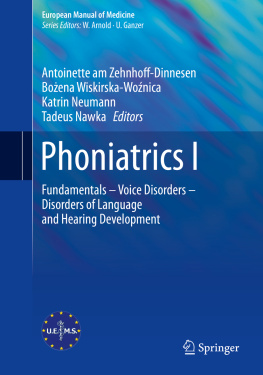
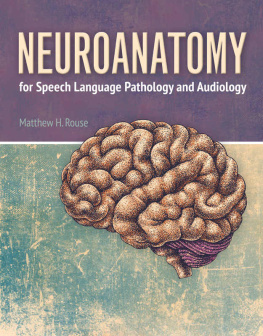
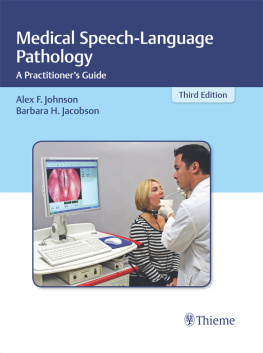
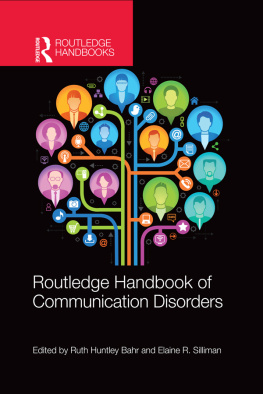
 The paper used in this publication meets the minimum requirements of American National Standard for Information SciencesPermanence of Paper for Printed Library Materials, ANSI/NISO Z39.48-1992.
The paper used in this publication meets the minimum requirements of American National Standard for Information SciencesPermanence of Paper for Printed Library Materials, ANSI/NISO Z39.48-1992.